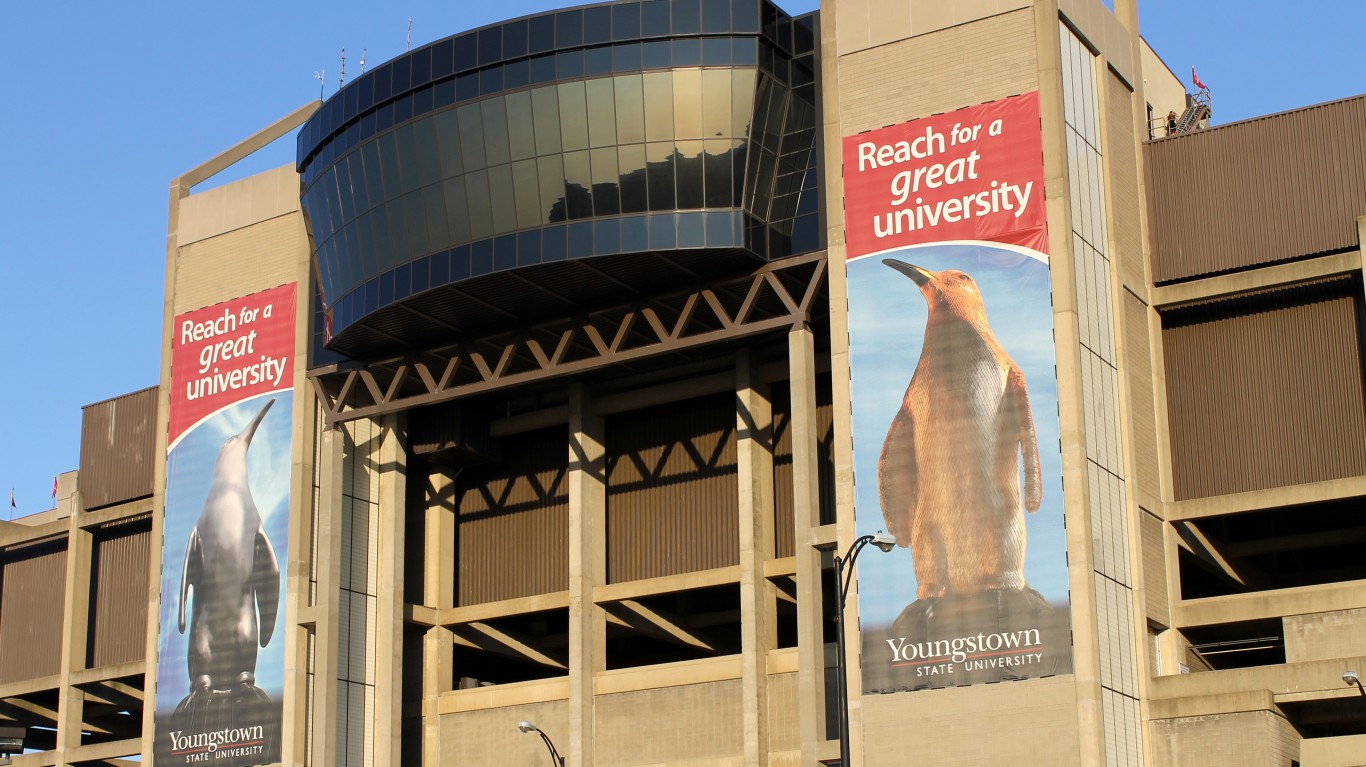Economy
This College Is at the Bottom of the List of America's 800 Best Colleges

Published:

A number of publications make lists of the best colleges and universities. Some cover just the United States. Others cover the whole world. The most often cited is probably the U.S. News & World Report list. Another one that is carefully followed comes from The Wall Street Journal. This list covers almost 800 colleges and universities — 797 to be exact. Ivy League schools are always at the top of the list. The top school on the new Wall Street Journal list is Harvard in Cambridge Massachusetts. The one at the bottom is Youngstown State University, which is in Youngstown, Ohio.
The bottom of the list is not the bottom of the entire universe of colleges and universities in America, by any means. The U.S. Department of Education counted 4,298 degree-granting postsecondary schools in the United States, based on data from the 2017−2018 school year.
The gulf between the top and the bottom of the Wall Street Journal list is extraordinary. The official name of the study is the Wall Street Journal/Times Higher Education College Rankings. Times Higher Education charges for data about universities and colleges, and it runs sponsored content advertising. This is not unlike the U.S. News & World Report model.
The survey’s methodology for the study takes into account “resources” that are available to students, which gets a 30% weight. This includes finance per student, faculty per student and the number of faculty research papers. “Engagement,” which is less well defined, makes up 20% of the rating. This includes student recommendations and the number of accredited programs. “Outcomes” is another factor. This includes graduation rates, debt at graduation and reputation. This is weighted at 40%. The final 10% is for “environment,” which includes diversity, both internationally and in diversity of staff and the student body. Clearly, the measure is subjective, but so are all similar rankings.
Harvard ranks second for outcomes, resources and engagement. It ranks 120th for environment. Environment is a metric on which most of the schools at the top of the list do poorly. All do well on outcomes and resources. The study points out that the schools at the top have huge endowments, which means their access to faculty and facilities is unprecedented.
Almost all the colleges at the top of the list are private universities. Public universities rank much lower for the most part. The top public university is the University of Michigan at Ann Arbor, which is in 23rd place. The list has ties, so the schools at the bottom of the list tie for a rank of over 400.
Youngstown State University (YSU) ranks 153 for engagement and is tied at above 400th place for the balance of the metrics. It has 9,824 students and a student to faculty ratio of 17 to one. Because it is a state university, tuition for those coming from outside the state is higher, but not much. In-state tuition is $8,669, while out-of-state tuition is $9,092. Room and board cost $9,400. The tuition cost gulf with the schools at the top of the list is large. Ivy League tuitions run over $50,000.
YSU is part of the University System of Ohio, which includes Ohio State University. YSU has six undergraduate colleges: Beeghly College of Education; Cliffe College of Creative Arts and Communication; College of Liberal Arts and Social Sciences; Dr. Dominic A. and Helen M. Bitonte College of Health and Human Services; College of Science, Technology, Engineering and Mathematics; and the Warren P. Williamson Jr. College of Business Administration. Its sports programs include football. It has an endowment of $265 million. (Harvard’s is $39.2 billion, the largest in America.)
The Wall Street Journal study does not really show which colleges are best for which students. That YSU is at the bottom has as much to do with its financial place in the higher education world as anything else.
Thank you for reading! Have some feedback for us?
Contact the 24/7 Wall St. editorial team.